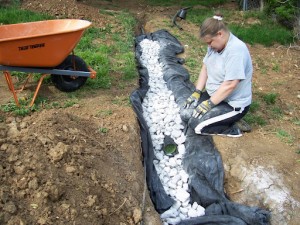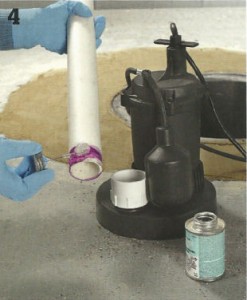 Most homeowners that have sump pumps installed know how to turn them on and off, as well as the right area where the pump should be placed. But, how many homeowners take into consideration where that water is going. It is easy just to stick the outgoing pipe outside to let it seep into the ground. However, sump pump owners should know they are responsible for where they put that water they pump out.
Most homeowners that have sump pumps installed know how to turn them on and off, as well as the right area where the pump should be placed. But, how many homeowners take into consideration where that water is going. It is easy just to stick the outgoing pipe outside to let it seep into the ground. However, sump pump owners should know they are responsible for where they put that water they pump out.
A sump pump has a pipe that water travels through to eliminate excess, so it doesn’t build up in your basement. At the end of the pipe a weather-proof tube is attached, which is flexible and meant to bend and maneuver around objects in order to get the end of the hose away from your foundation. The point of the hose is not really a point that ever gets much consideration.
One thing you should know is that your hose should end at least 10 feet from the foundation of your home, but for efficiency should be closer to 20 feet. If it is any closer, the water will be reabsorbed by the soil, and you’ll pump the same water repeatedly. This constant water flow will wear down your foundation and contribute to erosion and structural damage.
Even if you pump the water 20 feet away from your structure, there are still many things to consider. The location you choose should not be near a septic tank. If you often  experience moist conditions, your septic tank is probably already dealing with an overload of water. It definitely doesn’t need water added to the load it already has.
experience moist conditions, your septic tank is probably already dealing with an overload of water. It definitely doesn’t need water added to the load it already has.
Also, it is illegal in most places to let your sump pump drain into the local sewer system. The consequences are often more than a large fine and a slap on the wrist, especially if newspapers begin calling you a “neighborhood polluter”.
Allowing your sump pump to drain into a neighbor’s lot is not only discourteous, but also against the law in most places. This is only going to add unneeded water to their land, and they won’t be appreciating it. You could be held liable for contaminants in the water. For instance, if your neighbor grows prize-winning vegetables and suddenly they come out diseased and malformed, tensions will escalate when they discover why – because you drain your dirty water into their yard.
Finally, you should check to make sure the tubing is securely attached to the PVC pipe, so that it doesn’t leak out and get reabsorbed by the foundation. This will lead to corrosion that we mentioned earlier, and will put your sump pump under more of a load than is needed. This will lessen the life of your pump and cost you money for replacements.
